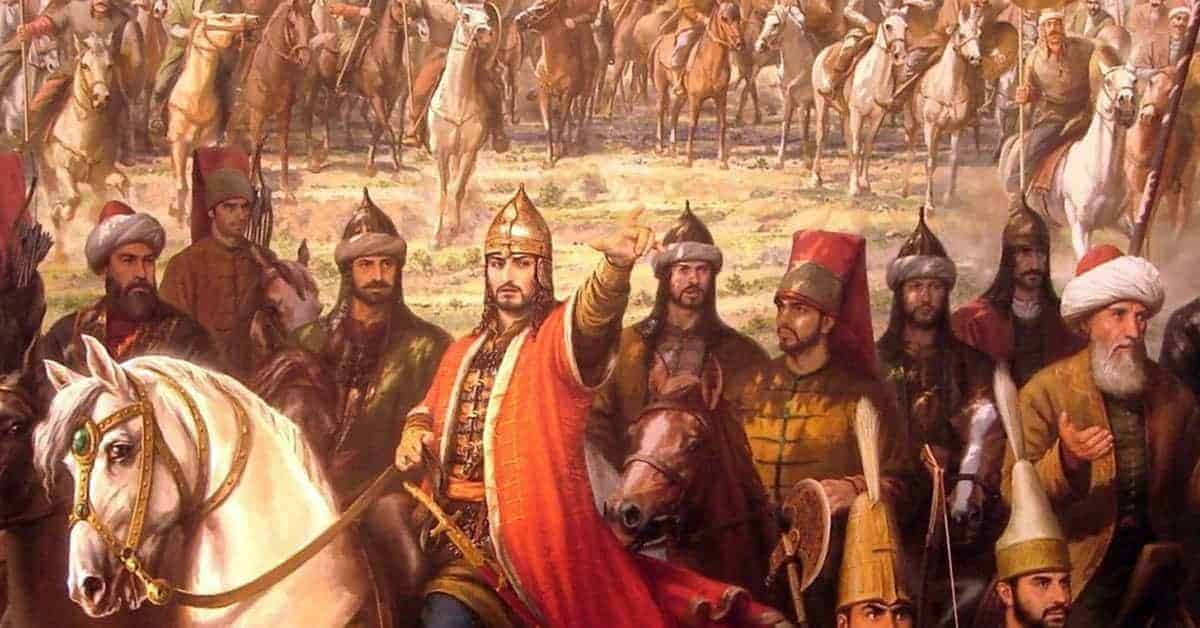City sieges are an odd concept today. Fights over cities are still common, but we often call them battles as they unfold quite differently than classic sieges. The most recent example we might have of a classic siege would be the Siege of Leningrad during WWII.
The early modern period sandwiched between the medieval ages and the industrial revolution and Napoleonic warfare saw a back and forth with leaps of technological advancements in attack and defense. Great bombards could plow through the old standard curtain walls of the day, but defenders began to figure out ways to use gunpowder weapons for defense as well as ingenious and complex star forts.
The addition of gunpowder made killing far easier even when simply shelling a city in off days of a siege, so the list below contains some of the deadliest sieges in human history.

1453 Siege of Constantinople: The End of Rome and the beginning of the Renaissance
Despite its fractured and fragile appearance in the 15th century, the Byzantine Empire was still proudly known by its people as the Roman Empire. Even surrounded on all sides, Constantinople was still the jewel of the Mediterranean and the most desired target of the growing Ottoman Empire.
When Mehmed the Conqueror decided to finally take the city he didn’t mess around. Assembling an army of 100,000 to as many as 200,000 and a navy of over 100 ships, Mehmed outnumbered the Byzantines 10-1 on land and 4-1 at sea, But the Byzantines still had the famous triple Theodosian Walls defending Constantinople and a massive chain guarding the entrance to the harbor.

As the armies prepared for a siege, a famous cannon engineer, Orban, offered his services to the Byzantines to build cannons for their defense. The dilapidated empire couldn’t afford his service so Orban went to Mehmed, who gladly accepted and soon had several giant cannons to smash through Byzantine walls.
The entirety of Western Europe was wary of the Ottomans and their different culture and religion, but few sent aide to the last Christian stronghold guarding Europe. Some Genoese archers and other supply ships found their way to the city, but many other western states would deeply regret letting the city fall.
The commander of the Ottoman fleet was almost executed for failing to find a way past the chain and allowing several Christian ships to sneak through the blockade but was saved after a daring plan. Using hundreds of greased logs, the Ottoman ships were dragged overland and around the fortified housing of the harbor chain. A fierce naval fight that night left prisoners on both sides. Mehmed decided to impale his prisoners on stakes and the Byzantines then executed their Ottoman prisoners on the top of their wall, this proving that the defenders were willing to fight to the end and expected no mercy.
Mehmed tried several different assaults over the next weeks. His great bombards crumbled sections of the walls where thousands of Turks charged through. The Byzantines would simply set up overlapping zones of fire from archers and smaller cannons likely set up as rudimentary shotguns. With the cannons taking hours to reload, the Byzantines filled in each defended gap with barrels of dirt and were pleasantly surprised when these absorbed the cannonballs better than their walls.
Ottoman tunnels were expertly countermined by the Byzantines and many hundreds and thousands died underneath the walls of the city. Seeing his piecemeal attempts failing, Mehmed resolved to try one massive attack on the 29th of May 1453.
Sending waves of his poorest quality soldiers, Mehmed overwhelmed the thin lines of Byzantine and Genoese defenders. After hours of this, the elite Janissaries attacked and were able to capture several sections of the walls including an area that had a small unlocked gate allowing Ottomans to pour through into the city.
Seeing this, many citizen defenders fled and Europeans scrambled to their ships to flee. The Byzantine Emperor Constantine XI reportedly charged into the fray and died fighting. The Byzantine defenders were able to hold out for up to a few hours before they were overwhelmed.

The Fall of Constantinople sent shock waves through Europe and brought about an epic conflict between the expanding Ottoman Empire and Europeans. The magnificently cultured Constantinople was finally extinguished as a remnant of the Roman Empire and rebranded as a bastion of Islam as Istanbul. The many fleeing scholars and works of art and literature would be one of the biggest reasons for the start of the Renaissance period.

